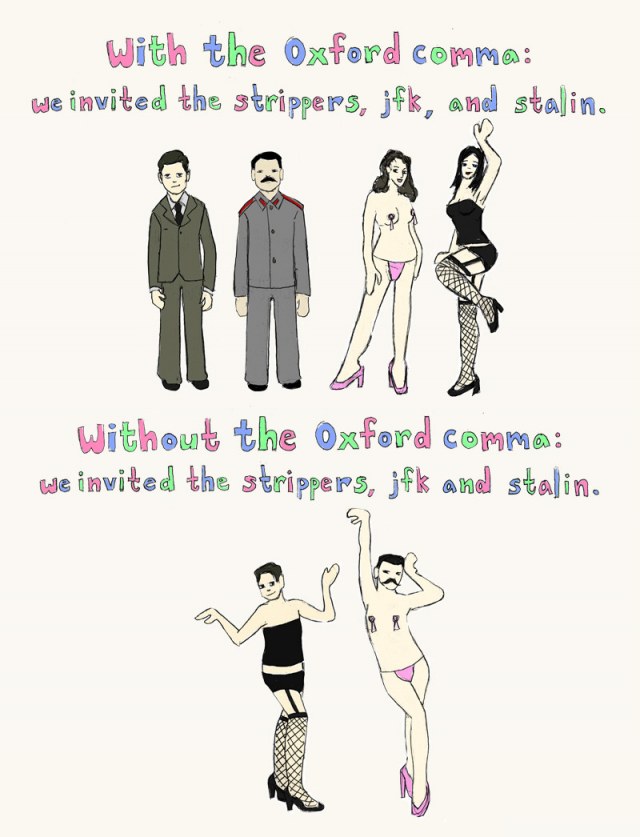English Writing: Oxford Comma and Strippers (2011)

There are arguments on both sides about ambiguity.
The serial comma (also known as the Oxford comma or Harvard comma, and sometimes referred to as the series comma) is the comma used immediately before a coordinating conjunction (usually and or or, and sometimes nor) preceding the final item in a list of three or more items.
For example, a list of three countries can be punctuated as either “Portugal, Spain, and France” (with the serial comma) or as “Portugal, Spain and France” (without the serial comma).
Opinions vary among writers and editors on the usage or avoidance of the serial comma. In American English, the serial comma is standard usage in non-journalistic writing that follows the Chicago Manual of Style. Journalists, however, usually follow the AP Stylebook, which advises against it. It is used less often in British English, where it is standard usage to leave it out, with some notable exceptions such as Fowler's Modern English Usage. In many languages (e.g., French, German, Italian, Polish, Spanish), the serial comma is not the norm and may even go against punctuation rules. It may be recommended in many cases, however, to avoid ambiguity or to aid prosody.
[Wikipedia serial comma]
Serial comma is great, because, in general, it is more consistent with the series of commas and less ambiguous.
A more logically simple and unambiguous form, is using curly brackets, like this:
“we invited: {strippers, jfk, stalin}.”
Quote from wikipedia on curly bracket:
Curly brackets – also called braces (US) or squiggly brackets (UK, informally) are sometimes used in prose to indicate a series of equal choices: “Select your animal {goat, sheep, cow, horse} and follow me”.
In Chinese, there's a special punctuation comma symbol dedicated to this, called “enumeration comma” or “pause mark”.
So, in a mock-Chinese, this would be:
“we invited: strippers、jfk、and stalin.”
The symbol is this 、. Its Unicode name is IDEOGRAPHIC COMMA. See: Intro to Chinese Punctuation.
See also: On the Postposition of Conjunction in Penultimate Position of a Sequence.